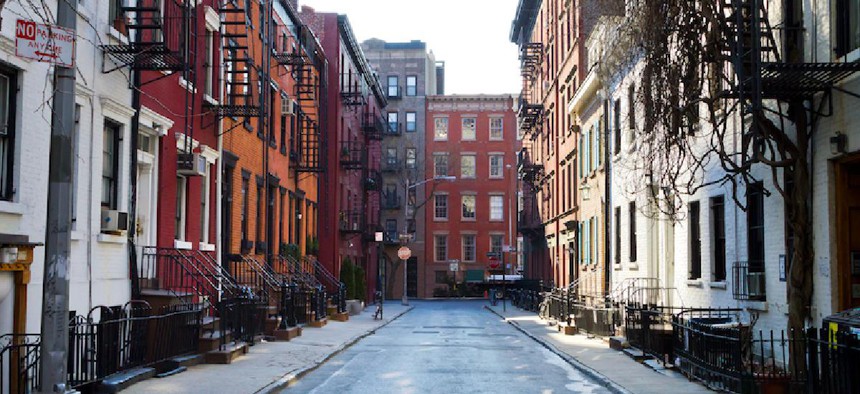Preservation plays a key role in New York City’s economy, and now we have the data to back it up. A study conducted by PlaceEconomics, a Washington, D.C.-based consulting firm, has provided the most comprehensive look ever at preservation’s benefits to the city.
Among the findings in the study: more than $800 million is invested annually in New York’s historic buildings, creating jobs for 9,000 New Yorkers and providing paychecks of over $500 million each year. Heritage tourism is a major component of New York’s visitor industry. Just the domestic portion of that visitor segment provides jobs for 130,000 New Yorkers.
Jobs in creative industries, a rapidly growing and vital component of the city’s economy, are disproportionately found in historic districts. Jobs at small and start-up firms also constitute a greater share of employment in historic districts than the city as a whole.
In the study, Stuart Suna, co-owner of Silvercup Studios, said: “Having real, quality historic or landmark districts available to shoot in is a strong foundation block of the film and TV industry’s desire to work in New York City and state.”
While The New York Landmarks Conservancy commissioned this study, PlaceEconomics conducted its research independently and using widely available data. Its findings should change the dialogue about preservation, countering claims in recent years that preservation – especially historic districts – hinders growth.
The report cites a recent Furman Center study showing that only 3.4 percent of all New York City lots are designated historic. “Citywide, those 3.4 percent of LPC designated lots cover only 4.4 percent of the city’s total lot area,” the report notes, “leaving over 95 percent of the land to be developed without (Landmarks Preservation Commission) oversight.” The Real Estate Board of New York rebutted this figure, stating that the Furman Center “ignores the reality that two-thirds of all properties are zoned for one-to-two family homes.”
But based on REBNY’s own calculations, PlaceEconomics writes, “low-density residential zoning is nearly 20 times the problem (if it is indeed a problem) as are historic districts.” A New York Building Congress report showed 2015 was a record year for construction activity, producing 36,850 units of housing.
Since 2000, 60 skyscrapers of over 150 meters in height have been completed in New York and 37 are currently under construction. Only Hong Kong tops New York in skyscrapers that size.
Historic districts are the densest residential neighborhoods in every borough, usually two to three times that of the borough overall. While Manhattan historic districts have a larger share of the white population, the report notes that black and Hispanic populations in historic districts in other boroughs mirror or exceed similar populations outside the historic districts. Historic districts in the Bronx, Queens, Staten Island and parts of Brooklyn also have a mix of incomes similar to the borough as a whole.
A recent ThinkBrooklyn study for the Historic Districts Council, cited in the PlaceEconomics report, showed that rental prices did not increase significantly more in historic districts than in non-designated areas and that subsidized housing units were developed at a higher rate in Manhattan, Brooklyn and Staten Island historic districts than outside them. Also: 27 percent of the subsidized rental units in historic districts were developed after the designation.
“Far from being a deterrent to growth,” PlaceEconomics concludes, “historic buildings and neighborhoods are at the center of a dynamic, growing and diverse New York City.”
Preservationists have always maintained that New York has room for both preservation and appropriate new growth. It’s time to stop scapegoating landmark preservation and acknowledge its role in enhancing New York’s future.
Peg Breen is the president of the New York Landmarks Conservancy.
NEXT STORY: Poll: de Blasio vs. hypothetical 2017 field


